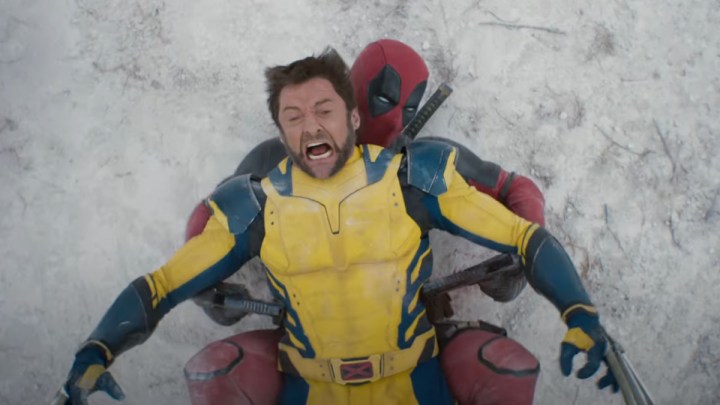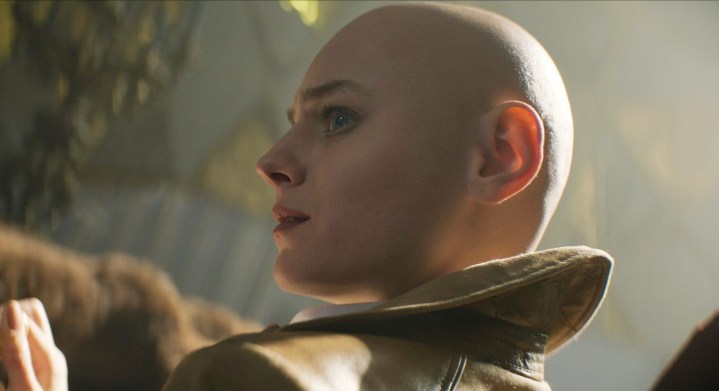When the Marvel Cinematic Universe launched in 2008, the fledgling Marvel Studios was forced to get by without some of their own most ubiquitous characters. Marvel had escaped bankruptcy in the 1990s by selling off the movie rights to their hottest comics libraries, such as Spider-Man, Fantastic Four, and the X-Men. Against all odds, this didn’t stop Marvel Studios into becoming a box office juggernaut that turned B- and C-list superheroes like Iron Man and Rocket Raccoon into cultural phenomena. However, with the Marvel empire now in decline, the MCU desperately needs an injection of new characters to recapture audience attention. And as fate (by which we mean, the iron hand and bottomless pockets of Disney) would have it, nearly all of the characters that Marvel auctioned off decades ago are now back in play -- namely, the X-Men.
The addition of familiar favorites like Wolverine, Storm, Cyclops, Rogue, and Deadpool into the MCU has been inevitable ever since Disney purchased X-Men rights holders 20th Century Fox in 2019, but Marvel has taken its time in reintroducing these absent characters into the sprawling franchise. There have been some teases throughout the ongoing Multiverse Saga, but so far, no notable X-Men characters have debuted in the core continuity of the MCU (referred to as Earth-616 in Doctor Strange in the Multiverse of Madness, but as Earth-199999 in most other places).
That may all change after Deadpool & Wolverine, a film that serves as a bridge between the now-defunct 20th Century Fox X-Men film franchise and Disney/Marvel’s MCU. Here, Ryan Reynolds reprises his role as the wisecracking, fourth-wall-smashing Deadpool, whose films take place in a continuity adjacent to the mainline Fox X-Men series, while Hugh Jackman returns to portray a version of Wolverine from a timeline we’ve never seen before. It’s a multiverse-hopping adventure involving the Time Variance Authority from the MCU series Loki, and will certainly have implications on how and in what form the X-Men will arrive in Marvel’s main movie timeline.
We’ve got a few ideas regarding how the X-Men’s MCU debut might play out, based on hints from Deadpool & Wolverine’s trailers, existing films, and context from the comic book source material.
Multiversal mashup
A key difficulty with adding the X-Men to the existing MCU is explaining their absence from the story so far. It’s one thing to hand-wave the Eternals skipping the final battle against Thanos, but it would be a much harder sell if a future MCU installment were to reveal that Charles Xavier’s benevolent Mutant superheroes and/or Magneto’s more radical Brotherhood have been operating in secret all along but somehow never crossed paths with the Avengers. Further, the idea that Mutants have been around for generations is central to a lot of X-Men mythology, and certain characters (namely, Magneto) have firm ties to specific historical events and can’t easily be transplanted into the present day without accounting for their whereabouts in the meantime.
However, throughout the Multiverse Saga -- which began production after Disney bought out Fox -- characters from the core Marvel Cinematic Universe have found themselves in alternate realities that resemble their own but also include X-Men characters. In Doctor Strange in the Multiverse of Madness, the MCU’s Strange visits an Earth that is watched over by the Illuminati, a council that includes familiar faces such as Peggy Carter, Professor X, portrayed by a returning Sir Patrick Stewart, and “Mr. Fantastic” Reed Richards, a character who was also reacquired by Disney during the Fox deal.
The Marvels (2023) | Post Credits Scene
In the post-credits scene to The Marvels, Monica Rambeau crosses over into a universe that is home to a superpowered version of her mother, but also Dr. Hank “Beast” McCoy. The setting of Deadpool & Wolverine, which is presumably the home universe of the latter character, features several returning Fox X-Men cast members reprising their roles as well as alternate versions of MCU characters like Ant-Man, and possibly Doctor Strange (or some other sling-ring user).
The implication here seems to be that the multiverse is full of Earths on which the Avengers, the X-Men, and other characters to which Marvel Studios previously couldn’t use have all co-existed from the beginning, more or less the way they have in the comics. This would make the core MCU -- as well as the Avengers-less Fox X-Men universes -- something of an aberration.
Presently, the Multiverse Saga is slated to conclude in 2027 with Avengers: Secret Wars, a film that shares the name of a 2015 comics event in which the Marvel Comics multiverse was collapsed and reformed. If the film centers around a similar disaster, this could be an ideal opportunity to mash the MCU’s Earth with another in which the X-Men have always been around -- not the X-Men from Deadpool or the X-Men movie continuity, but different versions of the characters who could be as similar or different from the ones fans already know and love. Future MCU installments would be free to revisit or reimagine popular storylines in this new context, or to accept the broad strokes of the films that already exist and then move forward.





